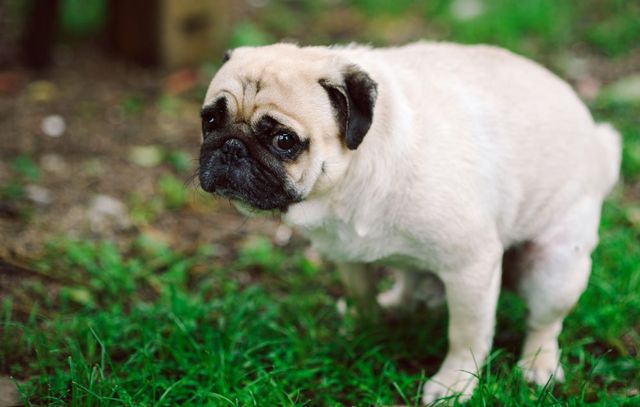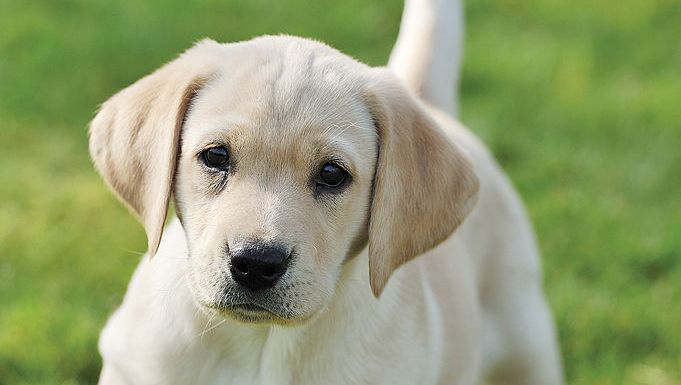There’s no way around it: Part of having a dog means you’re regularly scooping up poop.
Even if you have the sweetest, most adorable pup in the world, this task is never fun. But it is important. (And not just because your neighbor gets upset every time you forget.) The color and consistency of your dog’s poop can give you a lot of information about what’s going on inside his body—and whether a health issue could be brewing, says Judy Morgan, DVM, a veterinarian in Clayton, New Jersey.
That’s why it’s important to pay attention to what you’re picking up. While the occasional poop problem may not be cause for concern, knowing what’s normal for your dog makes it easy to tell when something is wrong, says Abby Huggins, DVM, veterinarian at Intown Animal Hospital in Atlanta.
Here are six common signs to look for, plus what they mean.
It looks like a firm, brown log.
Good news: This is exactly what you want to see. Chocolate-colored poop that’s the consistency of Play-Doh is a sign that things in your pup’s digestive tract are normal, Huggins says. It’ll have a mild odor, of course, but it shouldn’t smell so gross that picking it up makes you want to vomit.
There's a lot of it — and it smells awful.
The amount of waste your dog produces is proportional to the amount of indigestible content in his food. Dogs evolved to eat mostly meat, so the proportion of ingredients in their food can affect their poop, Morgan says. The problem typically comes from low-quality kibble, but if you think your pup’s meals should change, talk to his vet before taking action. Sudden food switches can be tough on dogs’ tummies.
It's loose or liquid-like.
Dogs most often get diarrhea from eating something they shouldn’t — think greasy table scraps or garbage the discovered while on his walk. Thankfully, the poop problem should clear up on its own. “Once the pet has passed the offending items through his GI tract, all systems return to normal,” Huggins says.
Diarrhea could also be a sign that something’s wrong, though. Loose stools can mean your dog’s food isn’t being absorbed in his GI tract, which could point to a food allergy or intolerance, says Huggins. Diarrhea can also indicate that your dog has a serious infection (like a parasite, a bacterial infection, or inflammatory bowel disease). So if the diarrhea doesn’t clear up on its own after a day or two, it’s time to call the vet.
It's small and hard.
Tiny, rock-like stool (or no stool at all) are signs that your dog is constipated. He could be eating too much insoluble fiber (found in vegetables) or not consuming enough liquid, which can gum up the works, Morgan says. Ingredients found in low-quality dry foods can cause the same problem.
Other factors could also be at play. Long-haired pups who frequently lick themselves (often because of itchy skin) could end up ingesting fur that causes a clog, Huggins says. Even chronic health problems like osteoarthritis can be to blame. Pain in the hips or hind legs can make it harder for dogs to maintain posture to poop properly, and holding it in can cause constipation.
Most seriously, constipation could indicate that your dog has an intestinal obstruction, which can happen when he eats a foreign object (like a rock or a sock), Huggins says. Those can be life threatening when untreated. So if you notice your dog has had trouble going for more than a day or two, always call the vet.
It's coated in mucus.
Weird but true: Dogs lower intestinal tract glands produce a clear, jelly-like slime to lubricate the colon and help stool pass more easily. And sometimes, that slime can coat your dog’s poop or accumulate at the end. “An occasional coating is normal, or it can indicate a self-resolving issue,” Huggins says.
But if the mucus becomes a regular thing, call the vet. It could mean your dog has a food intolerance or a gastrointestinal issue like colitis, since inflammation of the lower intestinal tract causes glands to produce more lubricating mucus.
It has a weird color.
Chocolate brown is the hue you’re looking for, folks. If you spot another color, there could be something wrong. “Green could indicate a bile or gallbladder problem, commonly seen in pets who are having trouble digesting fats,” Morgan says. Should that happen, talk with your vet about switching your pup to a lower-fat diet.
Other colors could signal serious problems. Black, tarry poop could be a sign of an upper GI bleed; yellow-orange or clay-like poop may be a symptom of liver disease; gray stools are common indicators of pancreas problems; and turquoise or blue-green stool could mean that your dog ingested rat poisoning, Huggins says. If you notice any of these colors, call your vet immediately.













